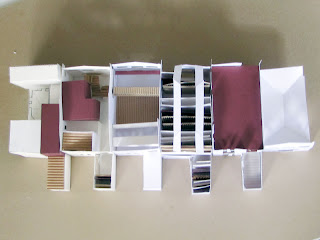This last week I have been in Christchurch, visiting my sites, talking to people connected to those sites and to other people in related professions (architects, Historic Places Trust, planners, researchers). It has been a very productive week, and a big learning curve.
Some of the observations I've made:
-everywhere you go and look in the centre of town, buildings are broken, or sites are emptied. Reference points keep disappearing. Everything feels disjointed and very disorientating. Particularly losing the tall buildings. This makes reconnection to landscape very important. People walking around admit they don't know where they are, what buildings used to be on the blank lots they are looking at.
-open and closed spaces... can see through to neighbouring streets you never used to be able to, see the hills like you never used to. I need to mark where the buildings are gone in my plans, it is very important.
-realization of nature (like the streams wouldn't conform with the grid)
-streets that are blocked off or near the red zone have been almost reclaimed by pedestrians and cyclists
-CERA: paid to demolish, make safe and fill in. No consideration of site history.
-all of my sites have had the surrounding buildings demolished too. Does this give the opportunity for testing the boundary line? It makes my thesis more difficult, but more important too.
-need Maori history knowledge in relation to sites
-people keep mentioning memory of doors, windows, stairs, chimneys. That is what people have kept from each site. They make up the 'face' of the building, the features -> they are what people remember.
-beautiful moment in Sherborne St house interview, the trace of where the stairs used to run in the house. The steep stairs in the Caxton Press that were removed. The grand steep steps in the Durham St church.
-beautiful moment in Sherborne St house interview, the trace of where the stairs used to run in the house. The steep stairs in the Caxton Press that were removed. The grand steep steps in the Durham St church.
What I've done:
-handed in my thesis draft
-interviews with professionals
-interviews with people from each of my three sites
-recorded and typed up all these interviews (x7. whew! see previous posts)
-site visits
-photos of sites, context
-reading and notes (Norberg-Schulz, Christian. Genius Loci:
Towards a Phenomenology of Architecture)









.JPG)
.JPG)
.JPG)
.JPG)
.JPG)